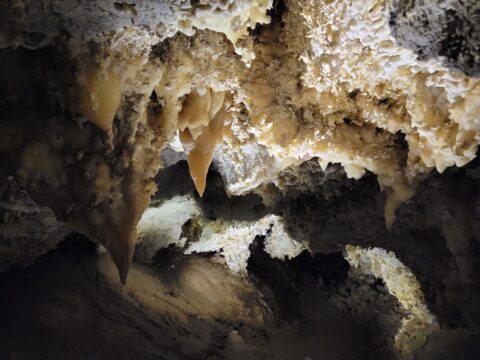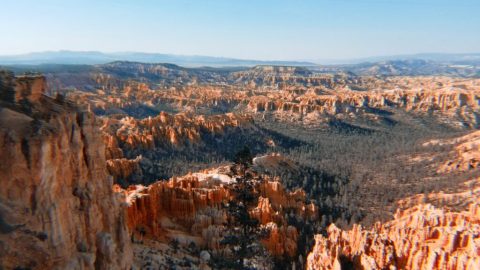Geological Significance
Norris Geyser Basin is the hottest and most acidic geothermal area in Yellowstone. It sits at the intersection of three major fault lines, including the Yellowstone Caldera’s rim and the seismically active Hebgen Lake Fault. This convergence of geologic forces makes Norris an ever-changing and unpredictable landscape. Unlike other geyser basins in the park, Norris experiences frequent temperature shifts, with some geysers and hot springs cooling down while others suddenly erupt to life.
The basin consists of two distinct sections: the Porcelain Basin and the Back Basin. Each offers something different, with geysers, fumaroles, and colorful thermal pools that showcase the amazing interactions of heat, water, and minerals beneath the Earth’s surface.
Porcelain Basin: A Scalding, Colorful Landscape

The first thing that stood out to me was how other-worldly this section of the park looked. Porcelain Basin is a stark, almost alien landscape. Unlike the lush, tree-lined hot spring areas elsewhere in the park, Porcelain Basin is largely devoid of vegetation due to the extreme heat and acidity of its waters. The ground is coated with a dazzling white mineral deposit known as siliceous sinter, giving the area its striking, lunar-like appearance.
The basin is home to numerous geysers and hot springs, each contributing to the area’s constantly shifting thermal activity. Some of the most notable features in Porcelain Basin include:
- Ledge Geyser – One of the largest geysers in the basin, Ledge erupts at an angle, sending jets of water and steam high into the air.
- Whirligig Geyser – Named for its churning, bubbling eruptions, this geyser contains thermophilic bacteria that create brilliant orange and yellow hues around its edges.
- Crackling Lake – A shallow, colorful hot spring that emits popping and crackling sounds due to escaping gas bubbles.
The Porcelain Basin Overlook provides a panoramic view of the entire area, allowing you to take in the dramatic steam plumes rising from the landscape.
Back Basin: A Hidden World of Geysers
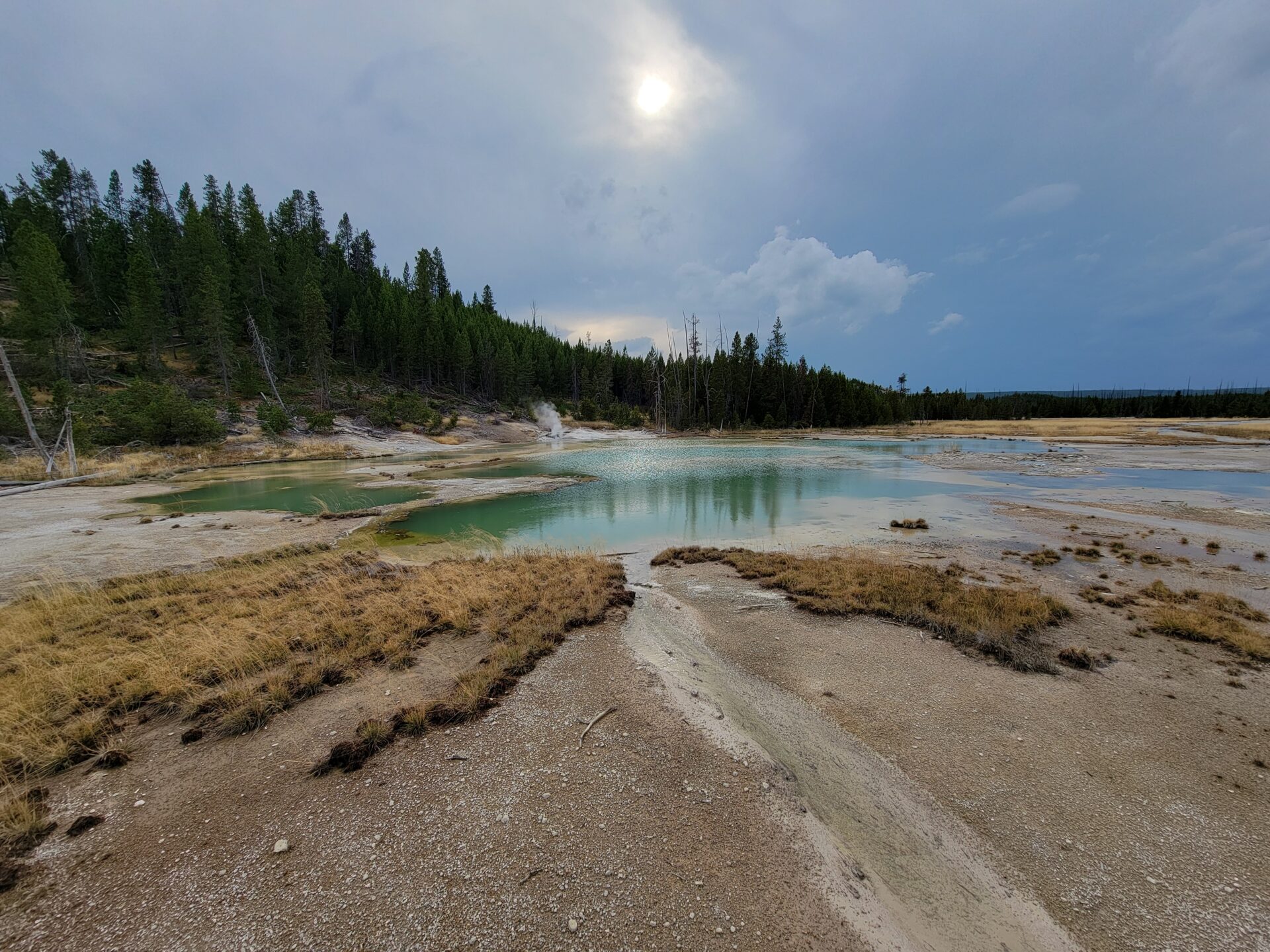
Unlike the exposed terrain of Porcelain Basin, the Back Basin is a forested area with geysers and hot springs dispersed among the trees. This section is home to some of Norris Geyser Basin’s most famous and unpredictable geysers, including:
- Steamboat Geyser – The tallest active geyser in the world, capable of eruptions exceeding 300 feet. Steamboat’s major eruptions are rare and unpredictable, occurring anywhere from days to years apart. However, even during its quiet periods, you can witness frequent minor eruptions and hear the deep rumblings of steam and water beneath the surface.
- Echinus Geyser – Once one of the most regularly erupting geysers in Yellowstone, Echinus now erupts sporadically. It is unique for its acidic waters, which give it a distinctive red and orange hue due to the presence of iron-oxidizing bacteria.
- Porkchop Geyser – Once an active geyser, Porkchop exploded in 1989 and now functions as a vigorous, hissing fumarole.
The Back Basin’s boardwalk trail winds through the steaming landscape, offering you an up-close look at these powerful geothermal features.
The Science Behind the Heat
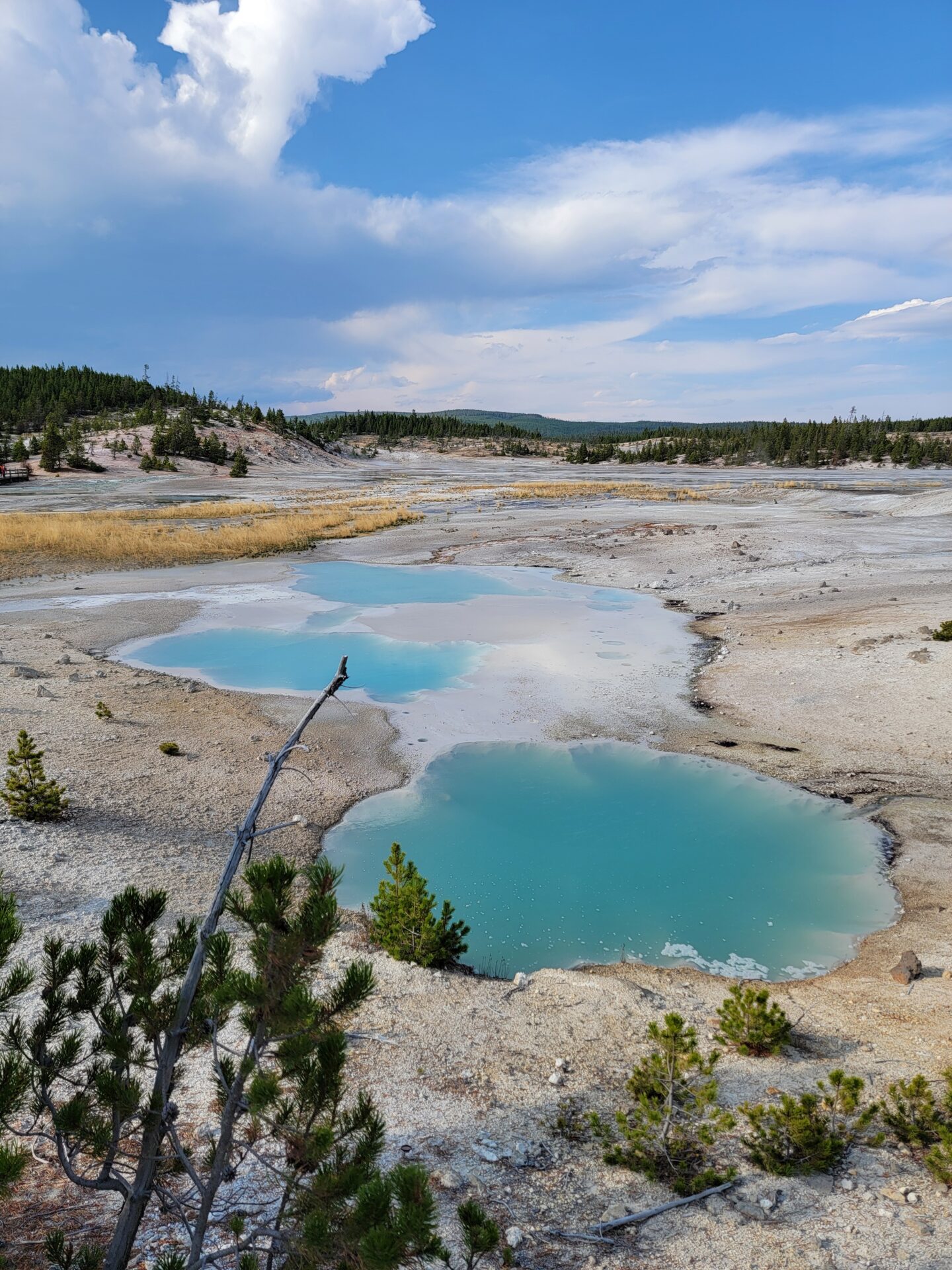
The intense heat of Norris Geyser Basin comes from a magma chamber located just a few miles beneath the surface. The basin’s extreme temperatures make it one of the most inhospitable environments in the park, yet life still thrives here in the form of thermophilic (heat-loving) microorganisms. These tiny organisms create the brilliant colors seen in many of Norris’s hot springs and geysers. The reds, oranges, and yellows result from different species of bacteria that thrive in varying temperatures and acidic conditions.
One of the reasons Norris is so unique is its highly acidic thermal waters. Unlike the alkaline waters found in other geyser basins, such as Upper Geyser Basin (home to Old Faithful), Norris’s waters contain sulfuric acid, contributing to the distinct smells and mineral deposits found throughout the area. Let me be one to say that the sulfuric smell is quite strong in some areas. Sometimes, the steam from some of the fumaroles and geysers would get blown in my face from the wind and make my eyes water, which was interesting, to say the least.
The Ever-Changing Landscape

Norris Geyser Basin is one of the most active geothermal areas in Yellowstone, and it is constantly evolving. Scientists have observed significant shifts in geyser activity, water temperature, and underground pressure over the years. Entire hot springs have cooled and dried up, while new ones have suddenly appeared. In 2003, an unprecedented rise in temperatures temporarily closed some boardwalk sections, as areas that were previously safe for visitors became dangerously hot.
Seismic activity also plays a role in shaping Norris. Earthquakes can alter underground water channels, triggering new geyser eruptions or silencing others. This dynamic nature makes Norris a fascinating place for researchers studying Yellowstone’s geothermal system.
Visiting Norris Geyser Basin
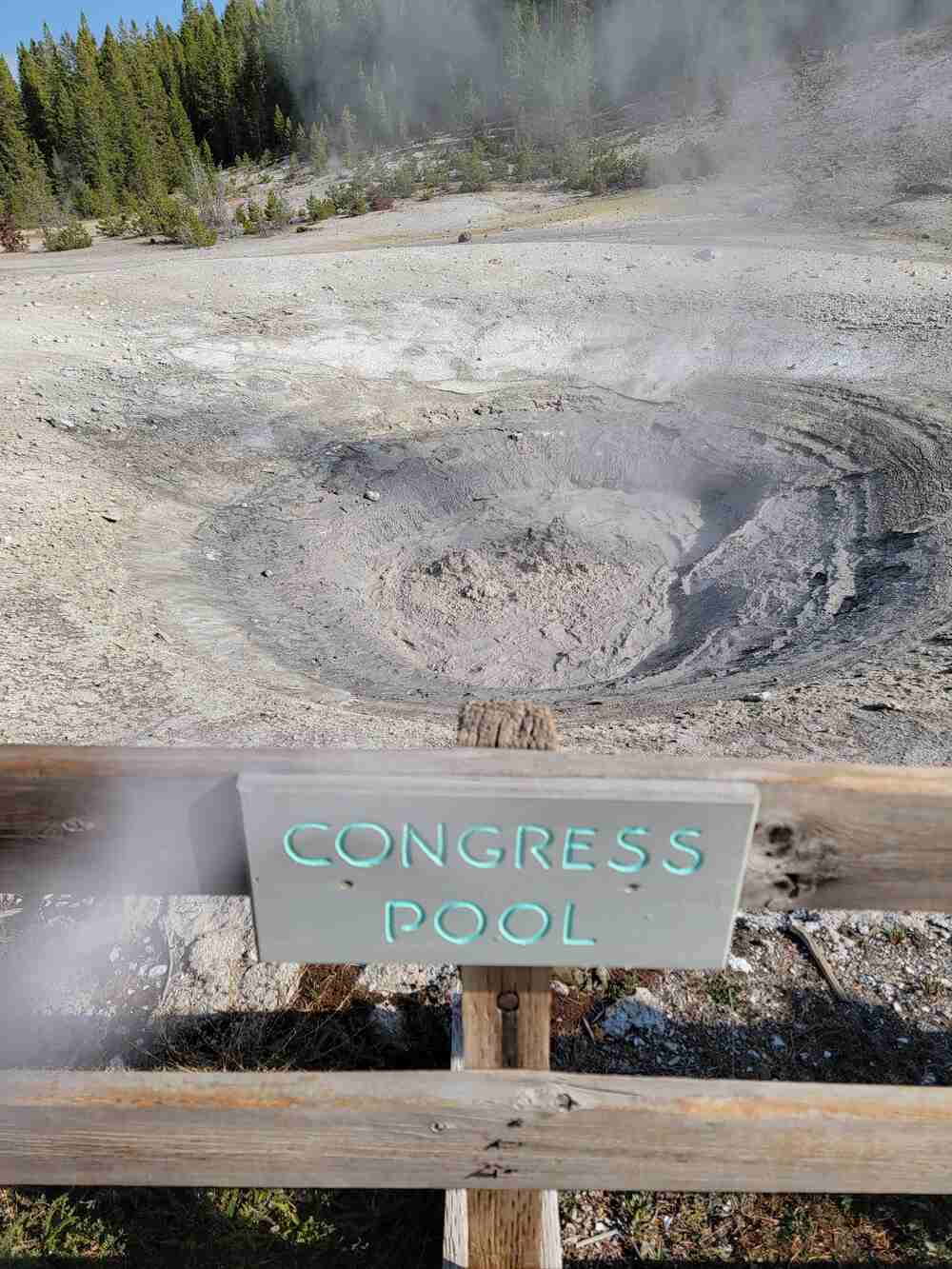
Norris Geyser Basin is easily accessible from Yellowstone’s Grand Loop Road, located between Mammoth Hot Springs and Madison Junction. The basin features a visitor center, the Museum of the National Park Ranger, which provides insight into the history of park rangers and their role in preserving Yellowstone.
Please take caution while exploring the basin. The ground in geothermal areas is thin and fragile, with scalding water just beneath the surface. Staying on designated boardwalks is essential for safety. Due to Norris’s high level of activity, conditions can change quickly, and some areas may be temporarily closed if deemed hazardous.
If you’re looking to explore both sections of the basin, the Porcelain Basin Trail (0.75 miles) and the Back Basin Trail (1.5 miles) provide excellent walking routes with scenic views of geysers, hot springs, and fumaroles.
Conclusion
Ultimately, Norris Geyser Basin is one of the most thrilling and unpredictable geothermal areas in Yellowstone National Park. I honestly had not even heard of it until I visited Yellowstone for the first time in September 2024.
Its constantly shifting geysers, vibrant microbial life, and extreme thermal conditions offer an unparalleled look into the forces shaping the park’s volcanic landscape. Whether you’re hoping to witness a rare Steamboat Geyser eruption, marvel at the colorful hot springs of Porcelain Basin, or simply take in the raw beauty of this geothermal wonder, a visit to Norris Geyser Basin will be a highlight of any Yellowstone adventure.

